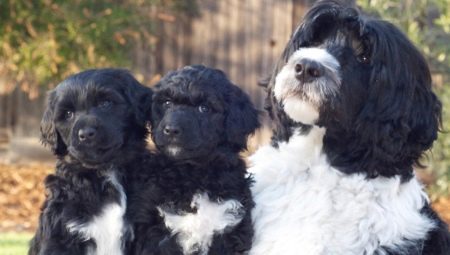The Portuguese water dog, or Wasserhund, is a very interesting, but rare enough breed for our country. If you see such a pet on a walk, you can take him for a poodle. However, the owners of the “Portuguese” claim that the similarities are minimal, and their favorites are the best in the world!
Dog breeders are proud of the excellent characteristics of these animals, among which one can note quick wit, high intellectual level, extravagant appearance.
Doggies often become participants and winners of various exhibitions and shows.
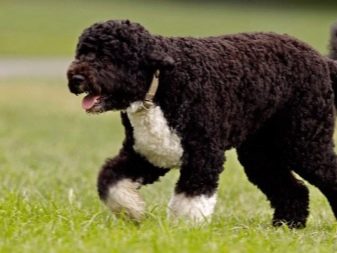
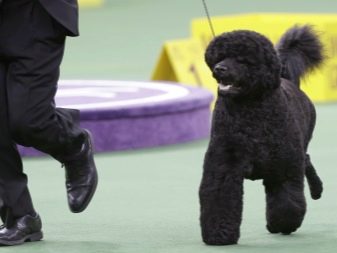
Origin
The Wasserhund breed dates back to Portugal in ancient times. However, evidence-based evidence of this fact has not been preserved. One of the theories says that representatives of the breed were brought by the Persians back in the VI century BC. But the formation of appearance and basic characteristics, according to scientists, was completed in the Middle Ages.
After that, the "Portuguese" firmly settled on the coast. Their initial function was to help local residents in fishing, which the dogs did very well. They could fish in the net, send messages from land to ships in the catch zone, and vice versa. Accordingly, this required endurance and high working capacity; these qualities were preserved among the breed representatives in our time.
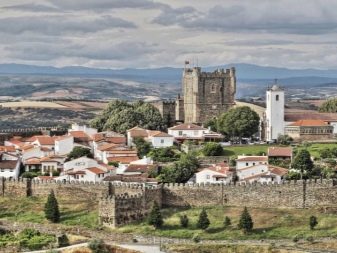
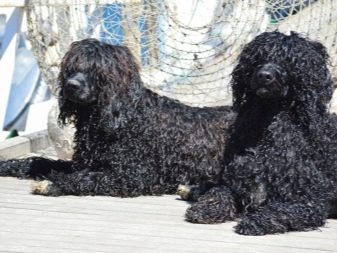
With the onset of the 20th century, industry and agriculture began to actively develop in Portugal. This could not but have an impact on the breed, which ceased to be in demand and almost found itself on the verge of extinction. However, the dog handler Vasco Bensuade took up the problem.By the middle of the 20th century, Portuguese water dogs were sent to the British Isles, but the plan failed.
The breed was revived already in the 90s, when it was added to the register of the American Kennel Club. After that, other countries of the world became interested in her, and now the puppies are quite in demand and have a decent cost.

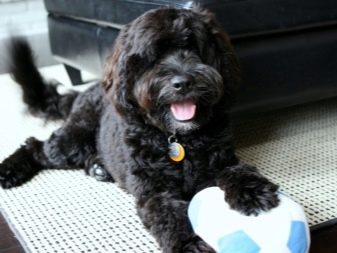
Breed description
According to breed standards, Portuguese water dogs are medium sized. Male growth is 50-57 centimeters, bitches are slightly smaller - from 43 to 52 centimeters. The weight of individuals is from 19 to 25 and from 16 to 22 kilograms, respectively.
As for the physique, it can be different. The effect is on the diet of animals and their lifestyle. The best option is if the pets have the conditions for active development and regular swimming. This allows you to develop muscle, form the skeleton and tighten the body.
The head of the "Portuguese" is wide and tapers towards the nose. The eyes are large, round, brown or darker, do not have light areas.
The body resembles a square, since its length almost corresponds to the growth of the animal.
Girls have a more elongated body. The neck is strong and muscular. A neat tail can be twisted in a semicircle.
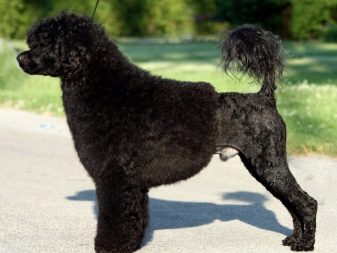
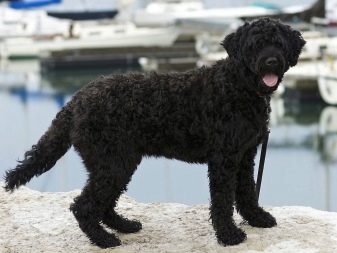
A feature of the Portuguese water dog is her coat. She is very thick and thick, without undercoat. The hair on the chest, forelegs and groin is softer. In appearance, representatives of the breed are divided into 2 types. In the first case, they have curly hair, in the second - flowing wavy. Any other option is considered a marriage.
There are also several types of color in these animals. Wasserhund can have a pure black coat or white with brown spots. There are also individuals that have black or brown fur interspersed with white hairs. It is acceptable when the dog is pure white, but at the same time she should not be an albino.
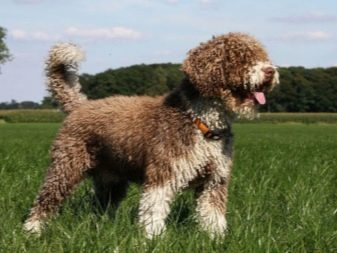
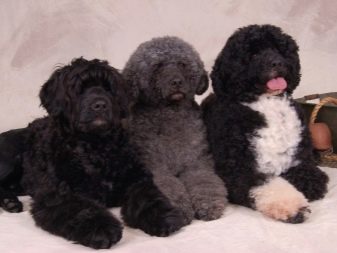
Character
Those who decided to get a Portuguese water dog in the house, note its excellent characteristics and say that it is difficult to find another such affectionate, hardy and active pet. And this is justified, because initially the breed was focused on helping people in various activities. This left its mark on the character. Doggies can quickly adapt to any situation, are very obedient and strictly follow the instructions of the owner.
In addition to endurance, breeders note such qualities as poise of mind, observation and unlimited patience. Dogs have an excellent instinct, it is not a problem for them to find the right thing even in a large area. Moreover, quick wit and intelligence help to observe the situation, evaluate it and, if necessary, make a decision on how to intervene.
Dog breeders believe that The Portuguese water dog is not inferior in development to such breeds as the German or Scottish Shepherd. However, this does not always play in favor of the hosts.
The pet needs to be trained and paid maximum attention to it, in the absence of this condition the animal will begin to get bored, and the lack of upbringing will manifest itself in the fact that it will be stubborn, spoil things and spoil it in all available ways.
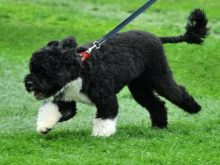
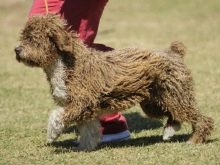
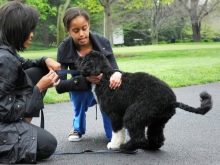
Despite the fact that representatives of this breed are very independent, this does not prevent them from being exclusively loyal to their owners. It depends only on the upbringing whether the pet will be obedient. He is very attached to all members of the family in which he lives, treats guests at home kindly, and is happy to make contact with them. He can indulge, but not from evil, but because of obstinate temper, and tries not to upset the owner.
However, with all of the above, the Wasserhund is a serious breed. When educating, you should follow some recommendations. An ideal option would be if the pet takes the position of a true family member, among which it most often chooses one owner.Such animals are very sociable, usually keeping them together with other pets does not cause problems. "Portuguese" will be an excellent companion for children, will be sensitive to the elderly.
In addition, such doggies are able to cheer up with their appearance and indefatigable energy.
Experts advise starting them up for people who are prone to frequent changes in mood and depression. In European countries, dogs of this breed have established themselves as excellent companions, they often work with them in psychological centers. The dog can reassure patients and tune them in a positive way.
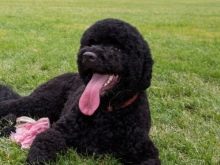
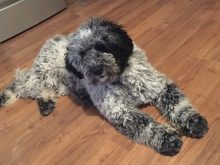
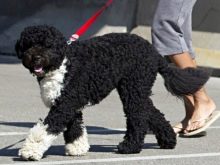
What to feed?
It’s no secret that the dog’s diet directly affects its health and appearance. In the case of Portuguese water dogs, the owner must first determine the type of food. It can be both natural products and dry food.
In the second case, you should monitor the quality - food must be at least premium. This will allow the body to provide the pet with the necessary amount of nutrients, vitamins and minerals. Additional complexes in this case are not needed.
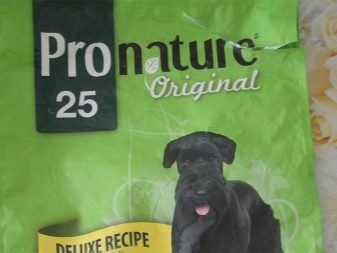
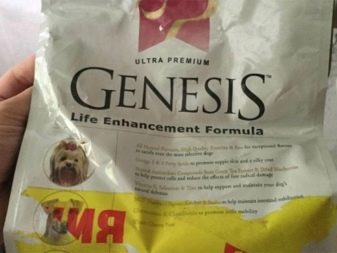
As for natural nutrition, it is not worse at all, however, the preparation of the diet falls entirely on the shoulders of the owner. The dog should receive proteins, fats and carbohydrates in the required amount. In such a situation, vitamin and mineral supplements will not interfere. Their number and composition should be determined by the veterinarian.
It is no secret that representatives of this breed are very active. Their lifestyle involves a lot of energy. Protein food will help fill this gap. If the animal is kept outdoors, in winter, he needs to pay special attention, including increasing the size of food servings.
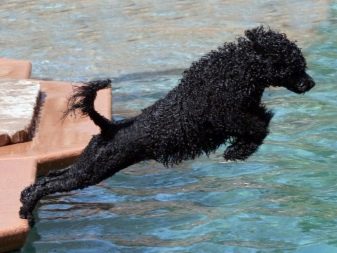
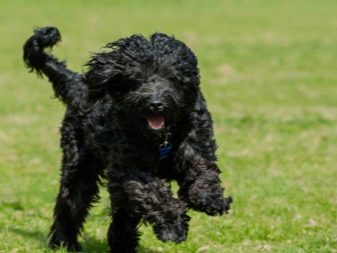
How to care?
In general, Portuguese water dogs are not too picky about grooming. The best option is, if the dog will be kept in a private house so that he can walk on his own in a fenced area. At the same time, walks with the owner twice a day must be a prerequisite. When living in a city apartment with a pet, you will need to walk for a longer time. Most kids can be taught to cope with their needs on a specially prepared diaper.
Since the wool can be quite long, it will be necessary to take care of it, but this does not cause any particular difficulties. The store sells special brushes for combing curly pets, which are very convenient to use. If the procedure is carried out regularly, the dog will look well-groomed and clean, and the risk of the appearance of tangles will disappear.
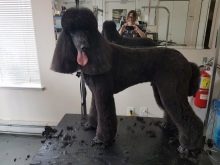

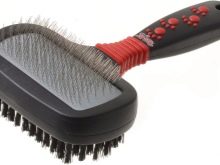
It should be noted that the Portuguese water dog is different lack of a specific smell. Frequent water procedures are not required for the representatives of this breed, since the wool has the ability to independently repel moisture and dirt. therefore it is enough to spend bathing approximately once every six months.
In winter, snow can clump onto the coat, which creates additional problems. To avoid this, it is recommended to purchase a special jumpsuit for walking.
The name of the breed itself suggests that its representatives love water. This means that they will try to plunge into all available bodies of water.
If it is a question of hot weather, after bathing the dog you need to get wet with a towel. In addition, fresh water is dangerous for the parasites that live in it, so preventive and therapeutic procedures will be required.
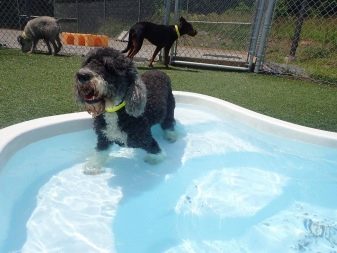
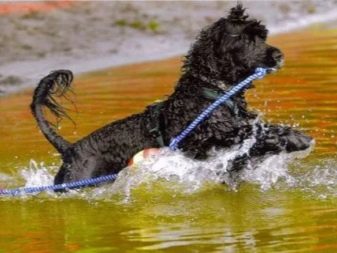
Wasserhound owners need to pay close attention to the eyes of their pets. Wool around them should be wiped every day. At the same time, you should clean your dog’s ears with a special preparation that can be replaced with a moistened cotton pad. It is necessary to monitor the teeth, and when plaque appears, brush it off.
The owner should monitor the timely vaccination of his pet.An insecticidal collar will help from parasites that bother a dog in the summer, it can protect against a lot of troubles and serious diseases carried by blood-sucking insects.
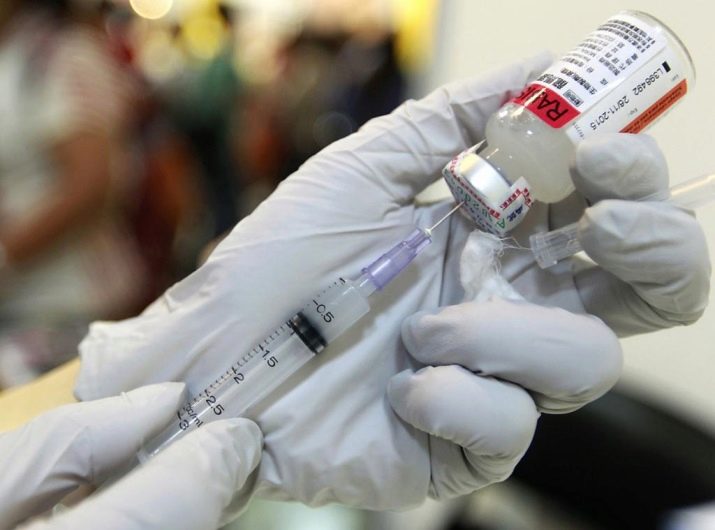
Training
Representatives of this breed are very curious. They are actively interested in the world around them and have the ability to learn. Breeders recommend starting education and training at a young age. The opinion that kids can not understand the commands and execute them is wrong. Already at 2 months they understand what is required of them. Respectively, early socialization will allow you to quickly accustom your puppy to the norms of behavior in society.
Walking in crowded places is necessary. You will need to visit noisy places with a lot of people so that the pet gets used to non-standard conditions. Communication with dogs of other breeds will not hurt.
For serious training, it is better to contact a professional dog handler.
However, this is not a prerequisite. Tightly this issue should be taken care of when the puppy reaches 6 months of age. It is necessary to pay attention not only to certain skills, but also to the development of instincts.
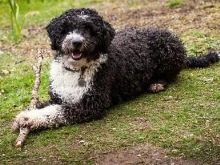
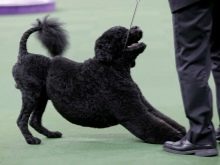

About the features of the breed, see the next video.
